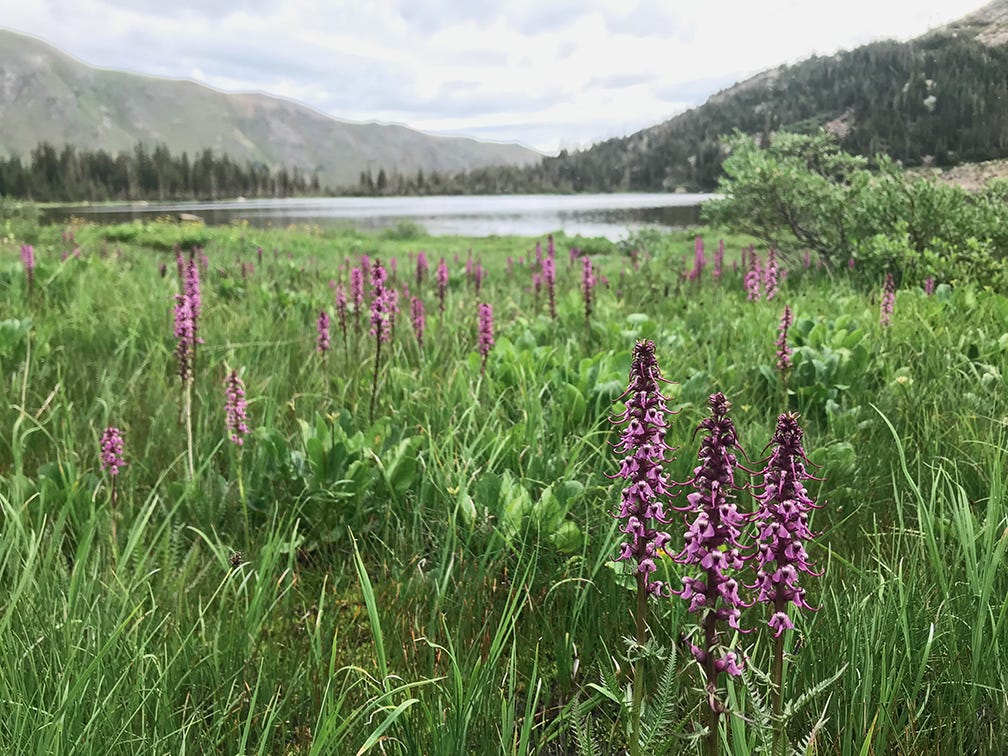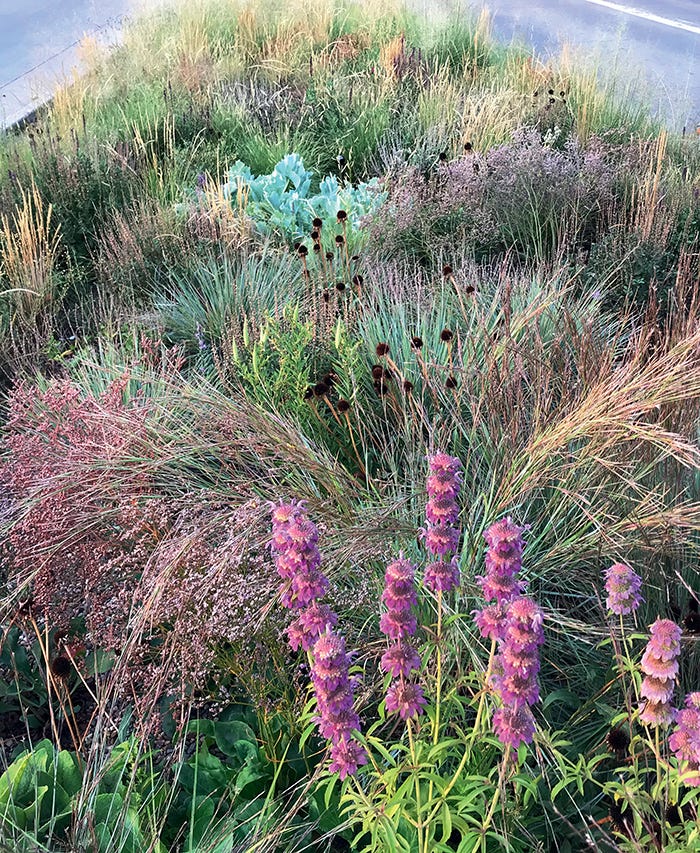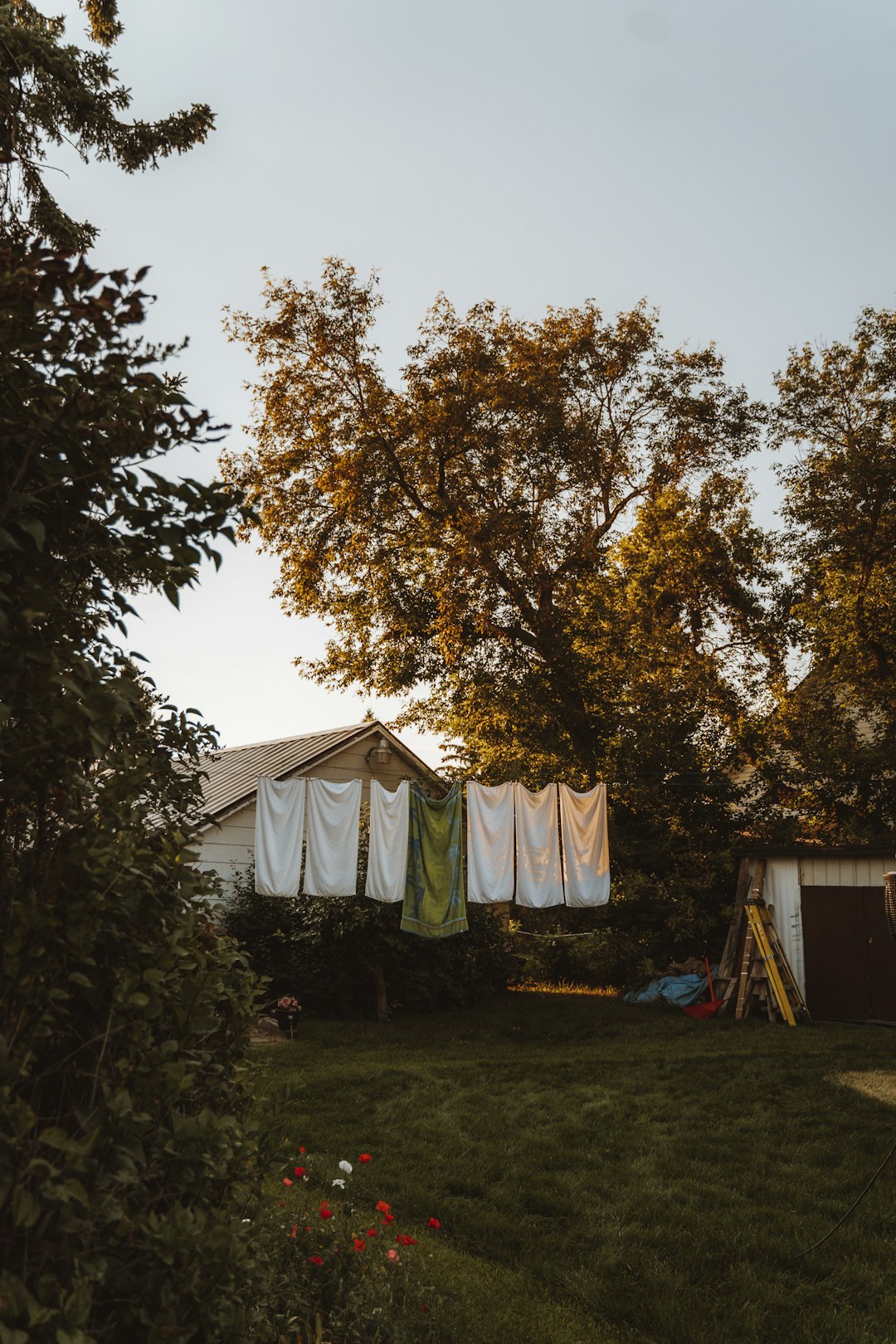Making mini meadows with Graham Laird Gardner
Tiny + Wild is new book about gardens that are small and sustainable
This newsletter is part of Living Small’s monthly Living Landscapes about sustainable gardening. Living Landscapes is becoming it’s own newsletter in 2024: Sign up here!
The camera roll on my phone reveals that I snapped photos of Tiny + Wild: Build a Small-Scale Meadow Anywhere in bookstores twice last year, once last spring in Santa Fe and again last summer in Kent, Connecticut. However, it wasn’t until a couple weeks ago that I finally sat down with this book about creating pocket-sized meadows. Once I dove in, I knew I needed to talk to its author, Graham Laird Gardner, because here was a book that combined my interests in small spaces and sustainable landscapes.
Tiny + Wild is a beautiful book, but it’s not just a daydream-y coffee table tome. Rather, it is a handbook that tells you exactly what you need to do to create a mini meadow garden. Oftentimes, I find that garden books leave me with tons of visual inspiration and a laundry list of questions, but not this book. Graham walks you through every part of the process in precise detail, but manages to write in a tone that is conversational, like he’s a friend explaining it to you. Graham makes it feel doable, and after my conversation with him, I believe it is.

Graham’s own experience designing meadows dates back 15 years, but it came into sharp focus during his years as a horticulturist for Denver’s public parks. When Graham arrived he says the horticulturists would plan designs based entirely on colorful annuals. “They'd go in, in late spring, get pulled out in the fall, and then be empty soil through the winter,” he says. “We were short on staff, and I wondered, ‘Why aren't we planting more native perennials?’” Graham knew transitioning to a more naturalistic, predominantly native plant gardens would use less water, require less maintenance, and support wildlife—a paradigm shift for the parks—but he couldn’t just put in grassy meadows because the public expected bright, flashy floral displays. The trick was to “transition the public perception and the public taste into these new styles,” he says. In addition to native grasses he says, “In addition to a palette of about 60 to 70% natives, I played with a mixture of annuals, spring bulbs, and plants that were non-invasive, but not necessarily native, to supplement and provide really flower-forward combinations.” It’s a similar recipe to how he creates mini meadows in Tiny + Wild.
Here’s an introduction to mini meadows and this wonderful book that I hope will inspire you:
What exactly is a meadow?
I asked Graham what makes a meadow garden different from say, a typical flower garden and he said, “I use the word ‘meadow’ in a referential way, as opposed to a literal way. To me, a meadow is highly biodiverse and densely planted, there are blooms throughout the season, and the plants are left up over winter for habitat.” The dynamism, he says, is in the initial design, which includes a strong element of grasses and local plants. There’s intentional texture, pattern, ratios, and interplay between plants.

A mini meadow can be anywhere
I think a lot of people would like to incorporate a wildflower patch into their yard, but aren’t really sure where or how to add it into the existing landscape. Graham offers a bunch of ideas of where you could squeeze one in: In a bed currently devoted to annuals, in place of a struggling patch of lawn, in the area between the house and driveway, along a property line, on either side of your front walk, surrounding your mailbox, tucked next to the front stoop, in the sliver of dirt between the sidewalk and the street, or in a raised bed or containers on a patio.

Be discerning with your inspiration
Part of the process Graham outlines in the book is gathering inspiration. Walk in nature near your home to take photos and make notes about what plants are thriving and how they are naturally distributed. Visit public gardens with designed meadows, again taking photos, but this time paying attention to the combinations and quantity of plants over a specific area, say a 5x5 or a 10x10 bed, which will give you an idea of what you might need for your own garden. Likewise, when looking at photographic inspiration, look for images that show plants in context–not just the close-up shots of the blossom.

A designed meadow isn’t just a recreation of nature
Graham encourages readers to look to nature for inspiration, but he isn’t telling gardeners to recreate what they see. A meadow garden is inspired by nature, but “with the volume turned up.” Think dense plantings but with more flowers and color. A ‘meadow’ is also about a plant community and how they interact, what Graham calls “the sociability of the plants.” To create a successful meadow, you need to select plants that will play well together, which Tiny + Wild will help you do with plant lists and planting plan advice.
Simplicity is key
Graham uses the same design principles for mini meadows as he does with large-scale meadows, but “with a smaller space it has to be even more refined, deliberate, and simple,” he says. “The temptation is to have a huge plant list, but you really need to cull that plant list and pay attention to bloom time.” In a larger space you can be less precise because your eye has places to move around, but in a tight spot, you have to be focused (this advice could easily be applied to your interior spaces, as well). When you're getting started, less is more, he adds. So, instead of including all seven grasses on your plant wish list, you might choose a warm season and a cool season grass.
About those wildflower seed mixes…
“Planting a meadow is not just shaking a can that you buy at Home Depot and walking away,” says Graham. “That's not going to produce anything sustainable or long-term.” For one, you need to do proper site prep, but he also cautions that the mixes sold as “native” seeds are filled with Eurasian species. (Although he notes he is not a purist about only native plants: He just wants to choose which ones he uses.) Plus, when you don’t know exactly what you planted in the first place, it can be hard to identify weeds, and over time annuals disappear from the mix and weeds outcompete the original seeds. Instead, Graham prefers to plant at least a foundation of mature plants and landscape plugs (sometimes supplemented with select seeds), which he details how to do in the book.
Don’t be afraid to make mistakes
“I've learned so much from experience and doing my research, and I still make mistakes. Don't expect perfectionism,” says Graham. “Ask the questions at your local nursery, join experts on guided walks, talk to the horticulturists at the gardens you visit, read the books that you can find, and do the research on the internet, but then just get out there and get your hands in the soil and go.”
Tiny + Wild: Build a Small-Scale Meadow Anywhere is available wherever books are sold–ask your local bookseller for it. I’ve also added it to my Bookshop.org sustainable gardening book list.
Related reading:
Last week’s most-clicked link was this book we’re currently reading.
3 More Things
The best small space I saw last week
This little house by GO'C, a Seattle-based architecture and design studio, comes via the Friday Cabins newsletter, which is an offshoot of the excellent Field Mag. If you’re into small houses, you should definitely subscribe. I was particularly keen on the way they built into a hillside and used a long, narrow skylight to bring daylight to the backside of the house.
Wilder yards are trending
I had a piece on Gardenista.com this week about the Wild Yards Project, a Los Angeles-based organization promoting native plant-filled yards, and then I saw another story in the L.A. Times about a homeowner who rewilded his front yard with California natives. (The comments on the Instagram post about the story made me smile too.)
Clutter is a national crisis
The U.S. Senate Special Committee on Aging recently released a report entitled “The Consequences of Clutter: How Hoarding Disorder Affects America’s Older Adults, First Responders, and Their Communities.” At the end the writers attempt to propose some community solutions to this pernicious problem.
One last thing: New favorite phrase: Hopescrolling.
Thank you for reading! I’ve got the second installment of Small Takes coming your way next week–it’s a good one!









I love the idea of this type of garden. But even more than that, I love learning about the people who are thinking differently about plants and our lived environment. Thanks for introducing us to Gardner! (Apt last name I just realized.)